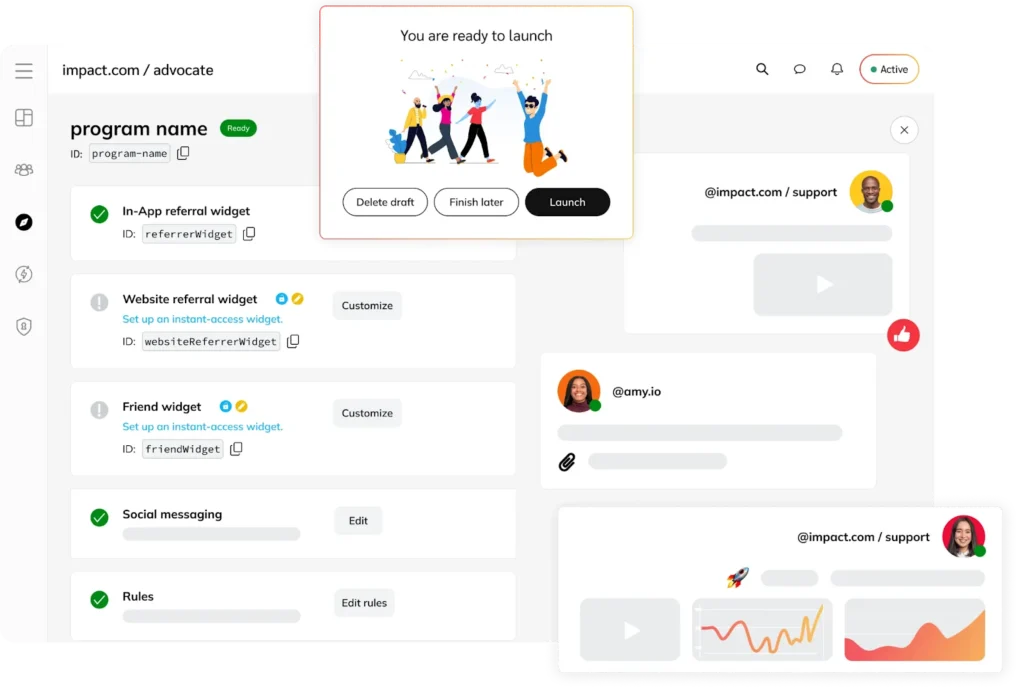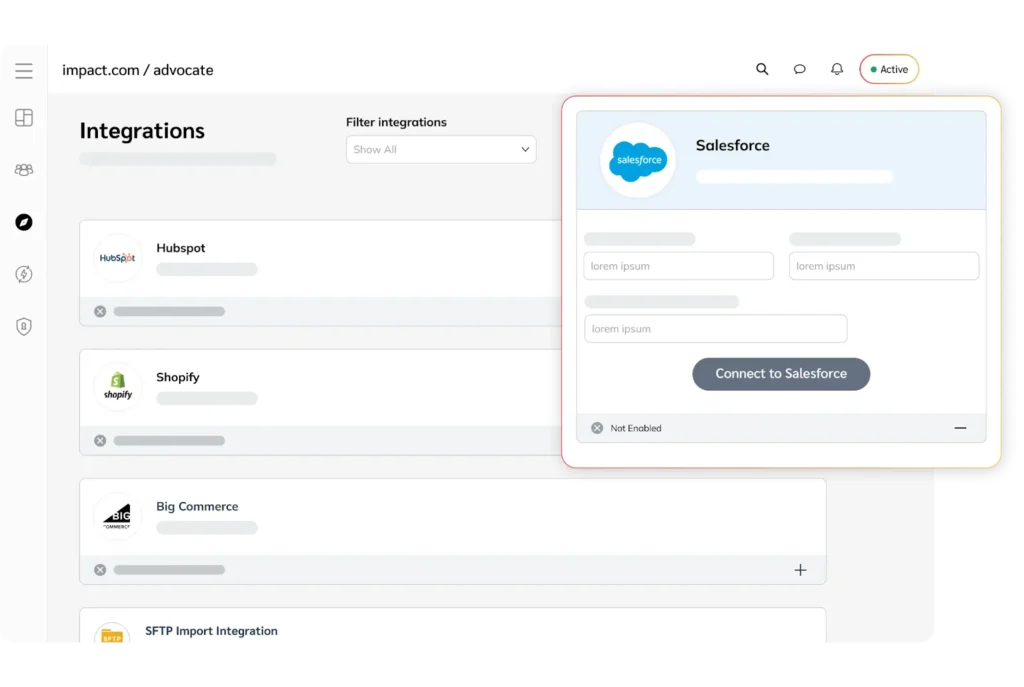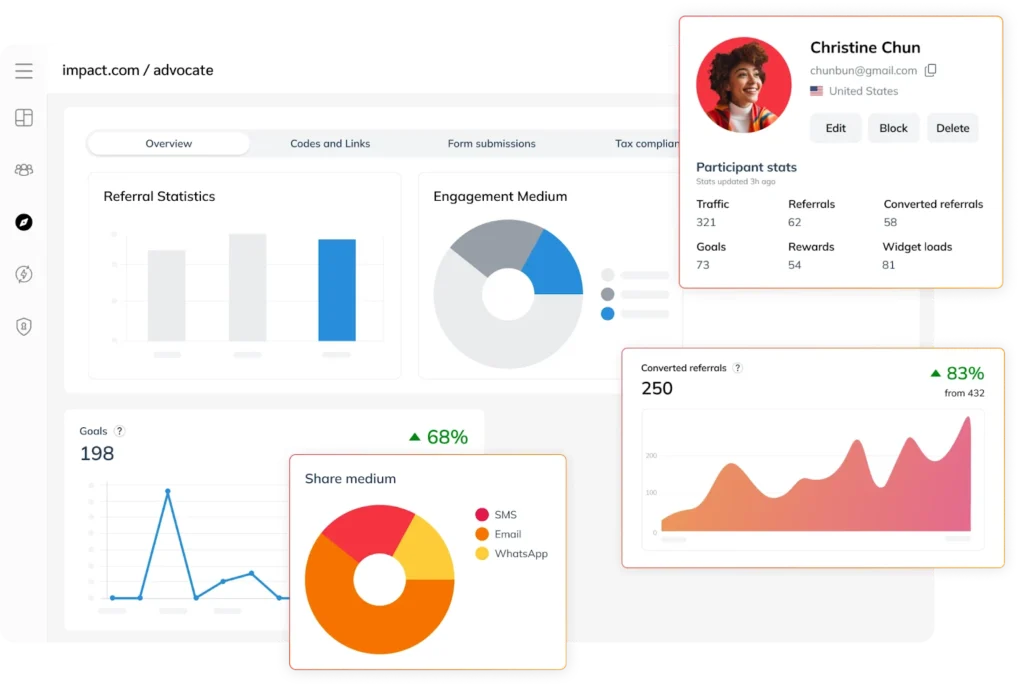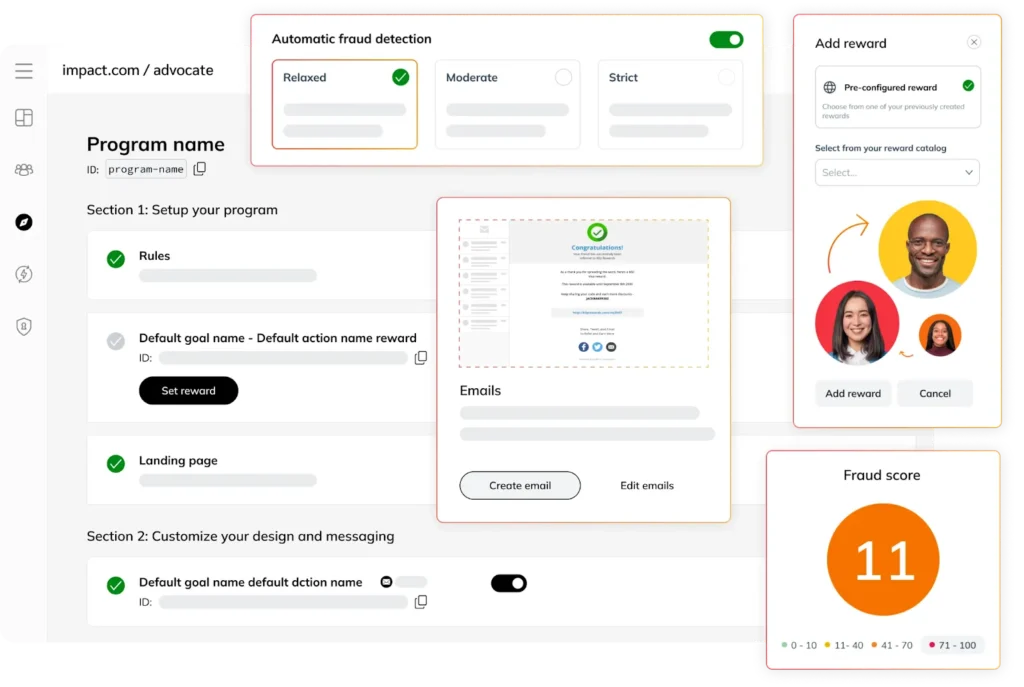Launching a successful referral program is more complex than it appears at first glance. Many businesses underestimate the challenges involved, leading to underwhelming results and missed opportunities.
The biggest hurdles?
Determining the right incentives, accurately tracking referrals, and creating a program structure that motivates customers to become brand advocates. These obstacles can quickly turn what seemed like a simple idea into a logistical nightmare.
But don’t worry. There’s a solution. The key lies in selecting the right referral software for your brand’s specific needs. With the right tools, you can tap into the power of customer referrals while cutting back on wasted time and making the most of your budget.
How to switch referral platforms in 6 easy steps:
- Plan your migration timeline
- Decide what to migrate/delete
- Start comparing referral platforms
- Choose your new referral platform
- Migrate key program data
- Test and launch your referral program
Check out how impact.com/advocate can help you drive revenue and attract more customers with word-of-mouth marketing.
Plus, the best providers offer ongoing support and updates to keep your program running smoothly. With the right referral software, you can streamline your referral campaigns and drive growth efficiently.
Step 1: Plan your migration timeline for your new referral platform
Start planning your migration as early as possible. Identify the key dates you need your referral program to be up and running—whether it’s a peak season, a product launch, or another key business event.
Choose your ideal launch date and work backwards to create a realistic timeline.
For most businesses, transitioning to a new referral platform takes four to six weeks from the moment they secure a new vendor. Giving your team enough time to complete a thorough migration is essential to setting your project up for success.
Before migrating, ensure your team is aligned, and your internal resources are allocated properly to keep the process on track.
One of the biggest mistakes is not involving stakeholders from the start. Early buy-in from the right people can help keep your project on schedule and enhance the success of your programs in the long term.
To avoid delays, ensure you have an executive sponsor and representatives from customer or growth marketing, marketing operations, tech and web development teams, and product marketing onboard from day one.
Early alignment prevents bottlenecks and keeps your project moving smoothly while building stronger internal relationships
When choosing referral software, there are several important factors to keep in mind. Look for software that offers:
- Tools to create customized and fully automated referral programs
- Strong security features, including fraud protection and GDPR compliance
- Flexibility to modify widgets and program rules
- Options to design referral programs that align with your brand’s style
- Advanced tracking and analytics to monitor and optimize program performance
Step 2: List what to keep, archive, or delete from the old referral platform
Now it’s time to take stock of what you want to keep, archive, or delete from your current referral program. Do this before selecting a new vendor, so it’s easier to transfer the essential elements and keep everything running smoothly.
Create a spreadsheet that lists every component of your program. Then, put each element into three categories:
- Keep (migrate)
- Archive (save and store securely)
- Delete (no longer needed)
Think critically—do you really need those reports from 2014? Older data might no longer be relevant if your brand’s strategy or position has evolved significantly.
We recommend keeping only the reports from the last three years. Ask yourself the following questions when sifting through data:
- Who will use these reports?
- What will the team need to analyze?
- How far back should we go for meaningful comparisons?
A spring clean will ensure you keep only what’s valuable to your program. Later, you can share the spreadsheet with the vendors you’re considering so they understand what you want to transfer.
Step 3: Start comparing referral platforms
Ready to find a new referral or loyalty vendor? Start by assessing what your current program needs. Think about:
- Access: How do people join the program?
- Eligibility: Who’s eligible to participate?
- Rewards: What actions earn rewards? What are the rewards, and how are they distributed?
- Automation: Which parts of the program run on autopilot?
- Communication: What messages are sent to participants?
While you’re at it, look beyond what you need now—think about what your referral and loyalty strategy might look like as your brand grows. You want a vendor who’ll support your goals today and scale with you for the long haul.
Pro tip: Choose a vendor with experience in seamless migrations. Look for built-in import tools to avoid the hassle of manual data entry. If a vendor lacks these tools, you will likely experience a longer migration process.
For instance, impact.com/advocate offers an Ambassador connector tool to make transitions smoother. The tool provides:
- Unlimited data import size
- Compatibility with Ambassador CSV file formats
- Processing within 24-48 hours, depending on volume
- Secure data handling—no need to email sensitive info
Start your search with these features in mind to ensure a smooth transition and set your brand up for sustained success.
When you’re ready to research vendors, check out comparison sites like G2 and Zendesk. These platforms feature real user reviews and side-by-side comparisons of referral and loyalty tools. Look for insights on data migration, customer support, and integrations—key factors for a smooth transition.
Features to look for when sourcing a new referral platform
When sourcing a new referral platform, choosing one with all the right features to fuel your brand’s growth is crucial. With impact.com/advocate, you get everything you need to build and scale successful referral marketing campaigns effortlessly.

Let’s dive into the must-have features that will make all the difference to your referral program:
Highly customizable

Choose a referral platform that lets you create a completely custom program. For example, impact.com/advocate has highly configurable builders that enable you to set unique rules and conditions and create custom events.
Choose from multiple incentives, decide who you’re rewarding and when, and for what behavior.
Easy to integrate with other systems

Look for referral software that integrates with your existing tech stack. Integrating with backend systems lets you customize events and gain attribution tracking.
When you connect tools, you can reward virtually any event. Some software lets you automate reward payouts and follow-ups by driving referral data back into your systems.
Advanced reporting insights

Your referral platform needs to have in-depth reporting capabilities. Make sure you can pull reports from the analytics dashboard to measure your program performance.
Once your referral program is in action, you’ll want to monitor revenue, engagement, and top-performing referrers. Robust reporting capabilities help you demonstrate your marketing efforts’ ROI and confidently make data-driven decisions.
Automated workflows

Your chosen referral software should make running, promoting, and protecting your program easy with automated workflows. Automating all or most of your referral program removes repetitive manual work and ensures your referral data is error-free.
Some referral software like impact.com/advocate lets you:
- Automatically reward one or both referral participants once they meet your chosen criteria.
- Send custom follow-up/reminder emails triggered once customers do certain actions.
- Use APIs and advanced integrations for detailed referral attribution.
- Protect your program from fraudulent activities through advanced and fully automated fraud detection and prevention capabilities.
Step 4: Choose the right referral platform that suits your brand’s needs
Now that you’ve compared various options, you can choose the best solution. Before making the final decision, discuss the options with all relevant stakeholders.
To help get stakeholders onboard, you need to assess the needs of different stakeholders, such as finance, technology, and legal teams to create a compelling argument for implementing the new referral platform.
Provide thorough research and create a detailed presentation backed by data and the benefits of the chosen software. Picking a flexible and scalable platform will encourage stakeholders to give their approval.
Step 5: Set program rules and migrate key program data
It’s time to work with your chosen vendor to set up your referral program in the new interface. This is where you’ll configure all program rules and reward details exactly how you’d like them.
Not all rules and rewards need to be set up before the data migration, but it’s ideal to set up programs first so you can associate members with the appropriate programs. Certain elements can be implemented together with the migration, such as custom-designed end-user reward widgets, notification emails, and any other program branding.
It’s important to get key stakeholders involved and aware of this process as soon as you start your vendor search. This way, you can ensure these stakeholders have the bandwidth to assist with the implementation in your timeframe. Additionally, align with your product teams if you plan to use the referral programs within your product or mobile app.
Next, you need to migrate important program data with guidance from your new vendor. You can load your program data into the new referral platform, using their direct import tool (if available). This includes user and program data such as:
- Reward balances
- Members (tagged by program)
- Reward statuses
- Referred members
- Custom referral links + codes
Pro tip: If an import tool isn’t available, discuss with your vendor the best way to proceed. Ask what format the data needs to be in and where to import it (at the database or program level). In some cases, additional services may be needed to complete the migration.
Pro tip 2: Remember to store a copy or backup somewhere secure if you have historical program data that you won’t be importing to your new platform but would like to keep as a reference. This data may include:
- Detailed transaction history
- Program performance reports
- Historical financial reports
- Default referral links
- Copies of templates and emails
Step 6: Test and launch your referral program
After all your data is imported and your programs are configured, it’s time to test the platform. Ensure that each program component functions properly and is integrated with the rest of the platform. Finally, you’re ready to launch!
As you promote your new program and generate traffic, you can continue optimizing for success. Referral software like impact.com/advocate has advanced reporting and tracking capabilities so you can easily adjust your program as needed.
A solid referral platform has advanced automation and seamless tech integrations
Choosing the right referral software will help you scale your brand’s program and reach more potential customers. Customizable workflows, automation, fraud detection, and seamless integrations can help you build a tailored program to match your business needs.
With impact.com/advocate, you can access all the features needed for referral marketing success—built-in tools, automation, and reliable support.
Looking for a highly customizable and scalable referral marketing solution? Then check contact impact.com/advocate today.
FAQs
A good referral software system is user-friendly, customizable, and scalable. It should integrate with your existing tools, have automated workflows, robust tracking and reporting features, and strong customer support.
Look for software that simplifies the referral process for your brand and customers, efficiently driving growth and engagement.
To run a successful word-of-mouth campaign using referral software, start by setting clear goals and designing attractive rewards. Use the software to create a seamless referral process that customers find easy to share. Then, use built-in tracking and analytics to monitor performance, automate communications, and refine your strategy based on what’s working best.
Review sites like G2, Capterra, and Zendesk allow you to compare different referral software platforms. These platforms offer detailed comparisons, user reviews, and ratings to help you find the best fit for your brand’s needs.
Want to learn more about how referral marketing strategies can grow your business? Check out these resources:
- The state of referral marketing report 2024 [research report]
- Top 6 customer referral marketing trends your brand can leverage in 2024 [blog]
- 7 referral marketing strategies to grow your retail business [+stand-out brand examples] [blog]
- Turn delighted customers into revenue-driving advocates [ebook]
- More than a pop-up: Building a customer referral program that scales [+ the tech that drives it [blog]








